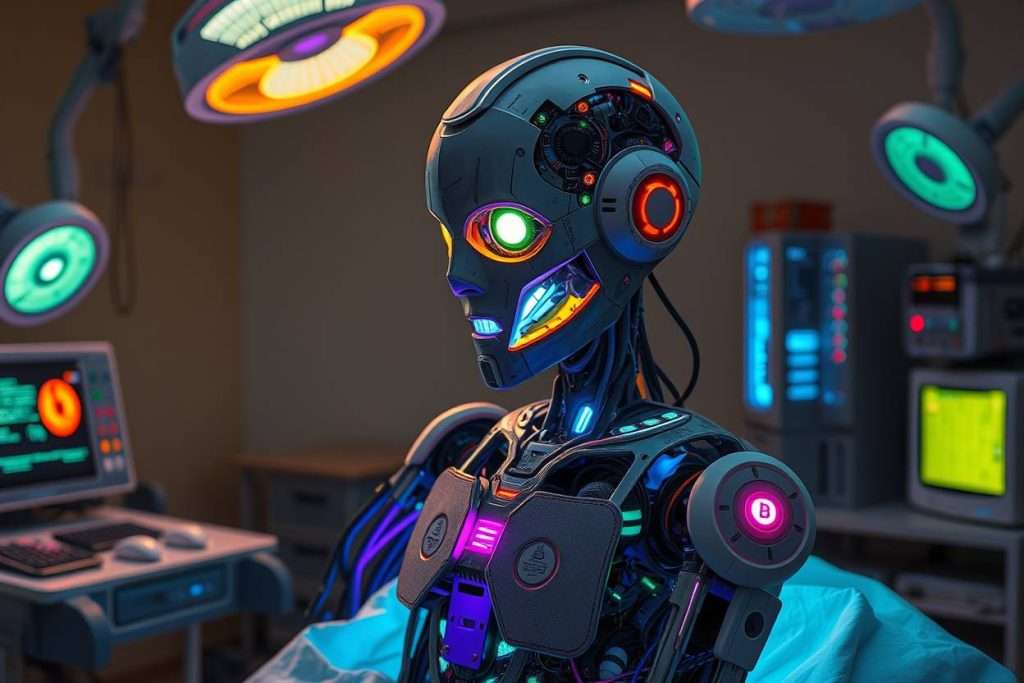The role of AI Agents in healthcare: The current and future applications

The Definition of an AI Agent in Healthcare Context
AI Agents in Healthcare are advanced software systems designed to achieve specific clinical or administrative goals by performing a sequence of autonomous actions. Unlike passive tools that simply present data, these healthcare AI agents can perceive their environment, reason through a workflow, and execute tasks to manage processes and support medical professionals. This capability is central to understanding how AI agents impact healthcare today.
The development of intelligent health agents, a type of vertical agents, marks a specific place between simple automations and general-purpose AI agents. While many technologies can analyze information, a true agent orchestrates a workflow from start to finish. This distinction is critical for understanding their current role and future potential in a clinical setting, where AI agents in healthcare are being designed to act as co-pilots rather than just analytical instruments.
Key Takeaways
- Agents vs. Tools: AI agents are workflow engines that execute multi-step tasks autonomously (e.g., drafting a clinical note), whereas AI tools perform single analytical functions (e.g., analyzing a scan).
- Current Use is Administrative: Today, AI agents in hospitals primarily function as “co-pilots” to automate administrative work like clinical documentation, not for making final, unsupervised medical diagnoses.
- Human Oversight is Mandatory: Due to safety and regulatory requirements, a “Human-in-the-Loop” approach is mandated for clinical decisions, meaning a qualified clinician must always be the final authority.
- Future Potential is Diagnostic: The next frontier for healthcare AI agents is in diagnostics and chronic disease management, but this is still a future blueprint, not a current reality.
- Major Barriers Exist: Significant challenges, including the “black box” problem, unclear legal accountability for errors, data bias, and outdated regulatory models, must be solved before broader adoption.
The market’s excitement for this potential is clear: according to MarketsandMarkets, the global AI in healthcare market was valued at USD 21.66 billion in 2025 and is projected to expand at a compound annual growth rate (CAGR) of 38.6% from 2024 to 2030.
To understand the current landscape, it’s essential to differentiate these two classes of technology.
- AI Tools (The Foundation): These systems perform a single, analytical task. An AI tool can analyze a CT scan to detect anomalies or screen for diabetic retinopathy. They provide data, but their function ends there.
- AI Agents (The Workflow Engine): These systems manage entire processes. A medical autonomous AI agent uses tools as its “senses” to inform a broader set of actions. For instance, an agent could analyze a scan, flag an anomaly, cross-reference the patient’s history in the EHR, and draft a preliminary report for review. It doesn’t just provide data; it executes a plan.
Fully autonomous agents are not yet approved for making final medical decisions. The risk associated with clinical choices means that regulatory bodies like the FDA mandate strict human supervision. This “Human-in-the-Loop” requirement establishes that a qualified clinician must be the final authority, verifying any AI-driven action. This is the primary reason why the answer to “Does hospitals can use AI agents?” for unsupervised diagnosis is currently no, but they can for administrative and support tasks.
What Agentic AI Systems Are Deployed in Healthcare Today?
So, are AI agents available in hospitals? Yes, primarily in an administrative capacity where they function as sophisticated co-pilots for doctors. Their most impactful role is alleviating the immense burden of clinical documentation, a major driver of physician burnout.
The most mature AI agents in healthcare today are those that tackle administrative tasks. Platforms from companies like Abridge, Navina, and Ambience Healthcare are prime examples of how AI agents can be used by doctors to reclaim time. This is a critical area for improvement, as studies show physicians can spend up to 45% of their workday on EHR and desk work. These agents provide powerful medical decision support on the administrative side.
The agentic workflow of these systems is clear:
- Input/Perception: The agent listens to and securely parses a natural doctor-patient conversation.
- Reasoning: Using Natural Language Processing (NLP), it identifies and structures key medical information, such as diagnoses, symptoms, and test orders.
- Automated Action: The system automatically populates the patient’s EHR with a structured clinical note, queueing up orders for the clinician’s final review and signature.
It is important to distinguish these co-pilots from the many powerful AI tools also in use. Hundreds of FDA-cleared algorithms assist in diagnostics, particularly in image analysis. These systems are exceptional at identifying patterns indicative of cancer or stroke. However, they are not agents; the clinician remains the sole agent who interprets that information and decides on the care plan.
What is the Technical Blueprint for a Future Diagnostic AI Agent?
While today’s healthcare AI agents focus on administration, the blueprint for a future diagnostic agent shows how these systems could provide profound clinical support. This is where the bulk of the projected market growth lies, particularly in areas like drug discovery, where AI is expected to reduce early-stage timelines by up to four years and cut costs by 25-50%.
Imagine a future where an AI agent diagnosis system assists an oncologist. This form of medical autonomous AI would function as follows:
- Step 1 (Data Synthesis): The agent integrates a new patient’s complete dataset: CT scans, genomic reports, lab results, and EHR history.
- Step 2 (Probabilistic Reasoning): It generates a differential diagnosis and recommends a treatment pathway based on clinical guidelines and real-world evidence.
- Step 3 (Orchestrated Action): It drafts a comprehensive clinical brief, presenting a ranked list of treatment options to the oncologist for the final decision.
This blueprint for AI agents in healthcare can be applied across medicine.
- Chronic Disease Management: An agent could monitor patient-generated data (e.g., glucose levels) and suggest proactive treatment adjustments.
- Clinical Trial Matching: An agent could automatically identify eligible patients for trials, a process where AI has been shown to increase patient enrollment rates by up to 20%.
How Are AI Agents Implemented in a Clinical Environment?

For hospitals looking to implement AI agents in healthcare, the process is a significant undertaking requiring careful planning.
The effectiveness of any intelligent health agent hinges on data quality. A successful implementation requires:
- Clean, structured, and accessible data from EHRs.
- Secure, high-performance computing infrastructure to run complex models.
Healthcare AI agents must integrate seamlessly with the existing IT landscape. This is achieved through:
- APIs (Application Programming Interfaces): To allow the AI agent to communicate with EHRs and other systems.
- Interoperability Standards: Adherence to standards like FHIR (Fast Healthcare Interoperability Resources) is critical for reliable data sharing.
Technology is only one part of the equation. A successful rollout of AI agents in healthcare involves:
- Training Clinicians: A thorough process to educate medical staff on how to use the agent and interpret its outputs.
- Redesigning Workflows: Modifying clinical processes to incorporate the agent effectively.
- Establishing KPIs: Defining and tracking metrics to measure ROI, such as reduced administrative time and improved diagnostic turnaround.
What Are the Key Challenges and Limitations for Autonomous Medical AI?
The path to more advanced medical autonomous AI is paved with significant challenges that must be addressed to ensure patient safety and trust.
Many advanced AI models operate as “black boxes,” making it difficult to understand the reasoning behind a recommendation. For clinicians to trust an AI agent diagnosis system, its process must be transparent.
A critical unanswered question is who holds accountability when a flawed AI recommendation contributes to a negative patient outcome. The legal framework and governance rules for these intelligent health agents is still being established.
An AI model is only as good as its training data. If the data is not representative of the broader patient population, the model can lead to poorer outcomes for underrepresented demographic groups.
The traditional FDA approval process was designed for static devices. It faces new challenges when evaluating adaptive AI systems that learn and change over time, a key feature of future AI agents in healthcare.
Conclusion: The Goal is Augmentation, Not Unsupervised Automation
The trajectory of AI Agents in Healthcare is not aimed at replacing clinicians but at augmenting their capabilities. Today’s most successful healthcare AI agents are co-pilots that shoulder the administrative burdens, directly addressing the estimated $1 trillion wasted annually in the U.S. healthcare system on administrative tasks. The path to more autonomous systems is a marathon, predicated on solving immense technical and ethical challenges. The immediate future lies in building powerful human-AI teams, where technology enhances a clinician’s ability to deliver faster, more precise, and more empathetic care.




